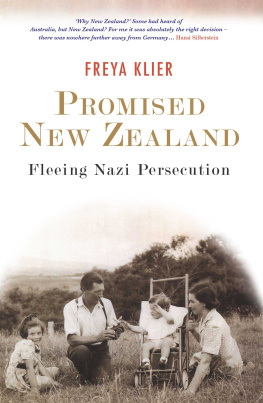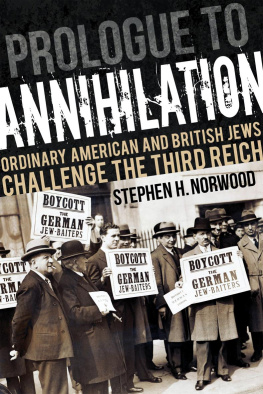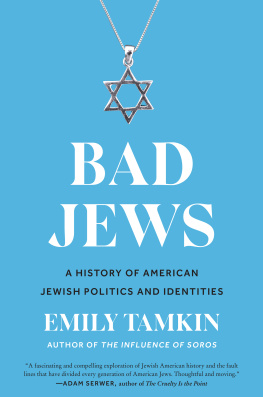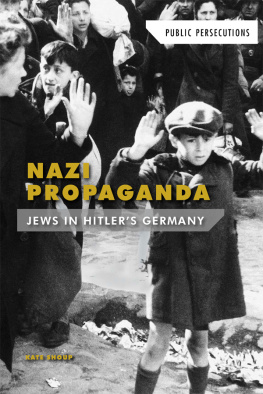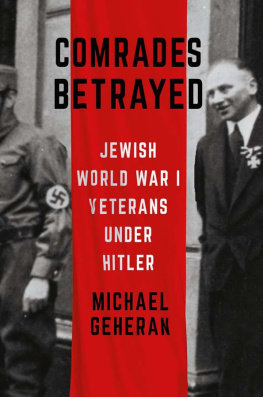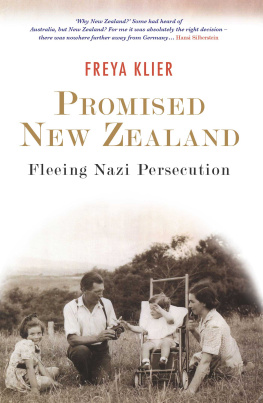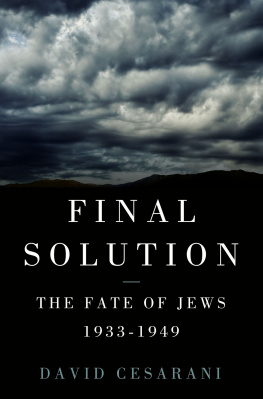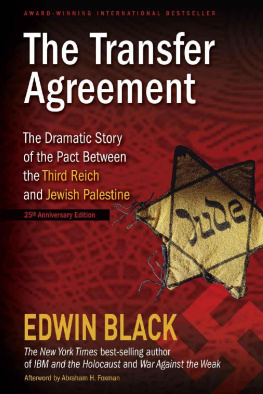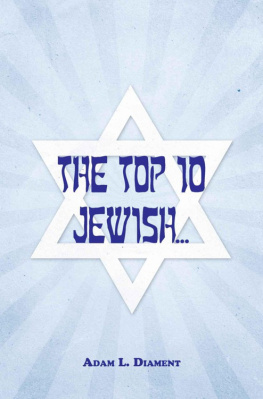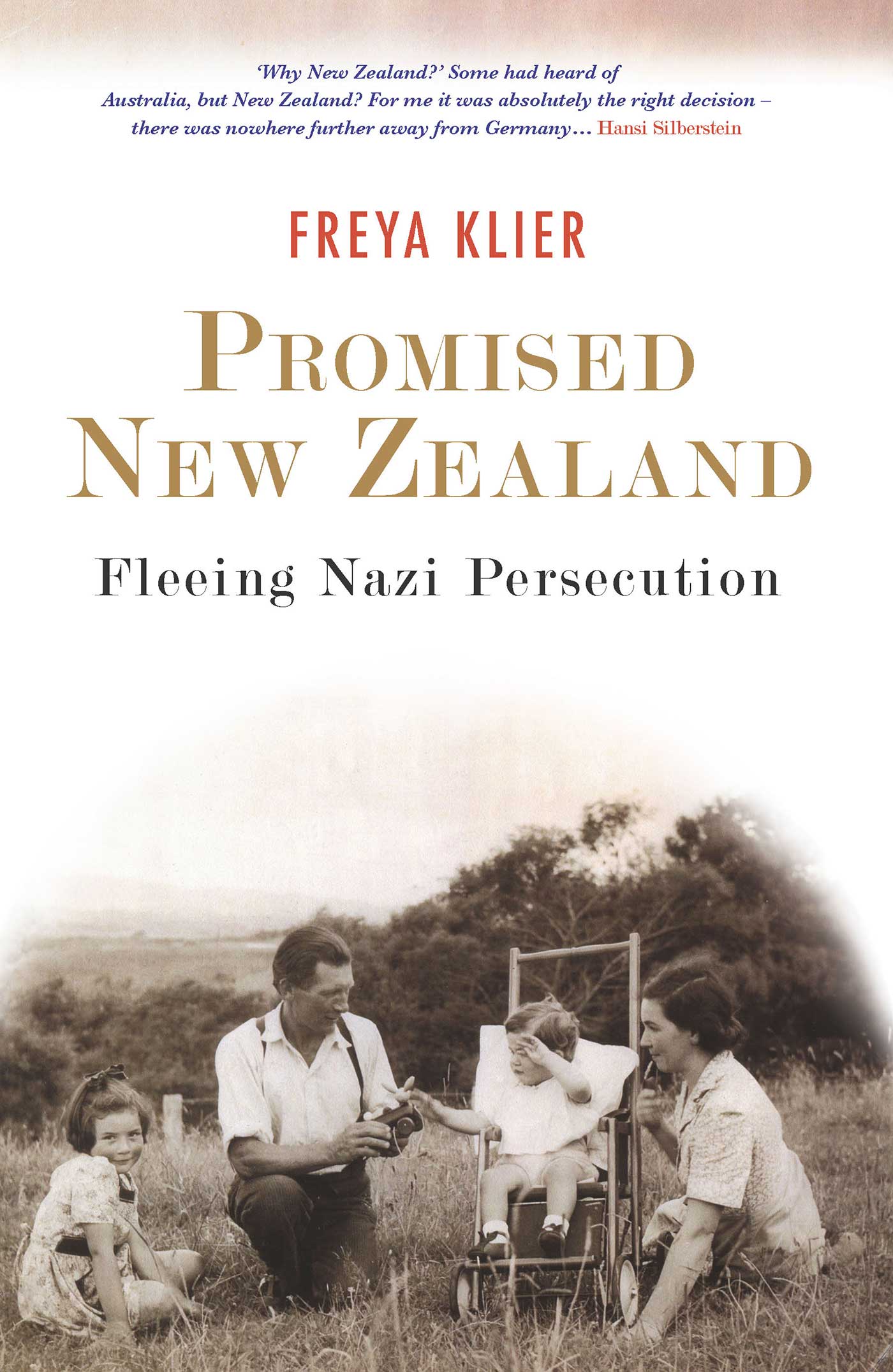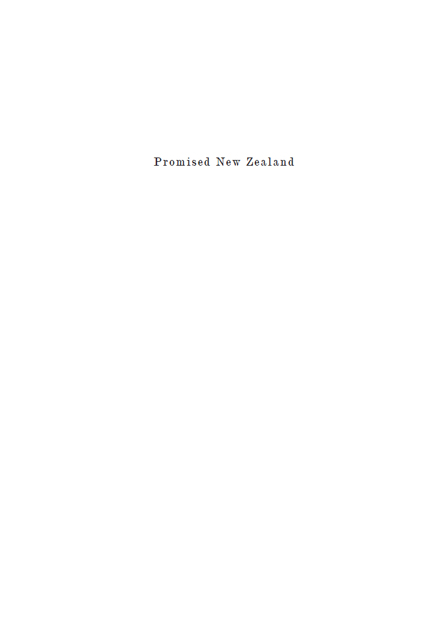Picture credits: Map on page 12 by Allan Kynaston.
Photos featured are from private collections with the exception of Karl Popper: University of Canterbury Library Collection, Christchurch; Alice Strauss, Karl Wolfskehl and Margo Reuben: Schiller-National Museum/Deutsches Literaturarchiv Marbach (Marbach German Literature Archive); Hitler in Paris 1940, Hitler and the Reichstag, Churchill, Roosevelt and Stalin: US National Archives.
Foreword
Years ago, during a flight, I came into conversation with a woman from Auckland. The meeting was a pivotal experience for me, as I learnt about a situation that was barely known in my homeland of Germany namely the emigration of German and Austrian Jews to New Zealand.
The parents of the personable lady travelling with me were Jewish refugees; in the late 1930s, my travelling companions mother, Dorothea, and her fianc had arrived separately on the Pacific side of the globe, having fled from a country that was firmly in the grip of the National Socialists. Finding refuge in New Zealand protected them from the Holocaust. They began farming not far from Mercer.
I was perplexed upon hearing this story. Why New Zealand? Although I had heard of Karl Wolfskehls New Zealand exile and also of Karl Poppers, these had seemed to me isolated cases. There was scarcely a mention of New Zealand in German exile research.
With avid interest, I began researching this dramatic and largely unknown chapter first in Berlin archives and then in those in Wellington and Christchurch. The more I researched, the more clearly an historical interface between the geographical antipodes of Germany and New Zealand began to emerge.
I was deeply affected by the stories of the Jewish refugees whom I was then able to interview. Two had survived Auschwitz. Another arrived in Auckland harbour in 1938, while the synagogues in Germany were on fire. Others succeeded in escaping literally at the last second. Some were stuck in London or in an Italian city waiting for a life-saving permit for that country in the Pacific with its twin islands, which seemed like Paradise yet had scarcely any concept of the simultaneous murderous reign of terror on the other side of the world.
Finally they settled in all parts of New Zealand in Russell, Auckland, Wellington, Christchurch, Milton and Invercargill. I was touched by the openness and warmth with which they received me half a century later and the great commitment with which they had contributed their lives and their talents to their new homeland. They brought practical knowhow, innovative ideas and medical skills, along with some European recipes. One of the Jewish immigrants created German sausage meats; another raised New Zealand packaging techniques to an international standard. While one man was able to join the Army in the midst of the war, another, though totally innocent, was left languishing in the internment camp on Somes Island .
You can discover these stories for yourselves within the book. In the process, you will come across the story of a child born in Belgium and that of a Polish young person a reminder that Nazi terrorisation was wreaked not just in Germany but throughout Europe.
The arrival of the refugees is of course inextricably linked with World War II. I have featured that history partly out of a personal need to acknowledge the New Zealand soldiers who sacrificed their lives so that we Germans and other Europeans who were born after the war could grow up in peace and freedom.
I especially hope this book will attract younger readers there is still so much of New Zealands history left to explore.
FREYA KLIER
Berlin, June 2009
People whose stories are told
Described as they appear at the beginning of this book.
Adam, Dietrich A 9-year-old living in Berlin with his family, who wish to emigrate.
Adler, Ruth The 4-year-old daughter of Philipp and Margarete Adler, who lives with her family in Hildesheim, Germany, above their shop Magazin Rothschild.
Briess, Frank A 28-year-old businessman from a family of spice and grain merchants living in Olomouc, Moravia (present-day Czech Republic).
Bruell, Fritz A Czech salesman who works for his uncles paperware factory in Linz, Austria.
Bruell, Lilly A 24-year-old haute couture fashion designer from Vienna.
Dane, Peter A 13-year-old school student from a family of lawyers living in Berlin.
Eisig, Heinz A 28-year-old athlete from Frstenwalde in Germany, working in an import and export firm in Berlin.
Filler, Sol A 20-year-old Pole from the small city of Brzozw in southern Galicia (a historic district lying between present-day Poland and the Ukraine).
Grynbaum, Salomon A Polish child who is living in Antwerp when the Germans invade Blegium.
Heppner, Alfred A 38-year-old doctor living in Berlin with his wife Lotte.
Herrmann, Gabriele The 11-year-old daughter of a German actor, living in Berlin near Peter Dane.
Jottkowitz, Hans A 15-year-old secondary school student in Berlin.
Kohane, Minna A 15-year-old girl living in Berlin with her strictly orthodox parents.
Lermer, Herta A 22-year-old singer from Breslau, Germany.
Lochore, Reuel A 27-year-old New Zealand teacher who is preparing to travel to Germany.
Loewy, Alice A 25-year-old former medical student who is about to marry Frank Briess.
Muenz, Peter A 12-year-old school pupil from a left-wing family living in Berlin.
Nathan, Hans A 26-year-old businessman living in Hamburg.
Neulnder, Ernst A 24-year-old medical student in Breslau, Germany.
Popper, Karl A young but well-known philosopher living in Vienna who wishes to find a university position abroad because of the disquieting political climate.
Ruben, Margot A 29-year-old woman from Berlin who joins Karl Wolfskehl in Florence in 1934 as his assistant and soon his companion-in-exile.
Silberstein, Hansi An 11-year-old school pupil living in Berlin with her family, who own a department store.
Silberstein, Fred The 8-year-old brother of Hansi Silberstein.
Wolfskehl, Karl A 64-year-old Jewish poet of renown living in Munich.
PART I
19301938

1930
A New Zealander in Berlin
In the autumn of 1930, a young New Zealander enrols at the Institute for Foreigners and shortly afterwards in a teacher training course at Berlins Humboldt University. His name is Reuel Anson Lochore. New Zealanders are infrequent visitors to Germany in the early part of the twentieth century the sea voyage is long and expensive and since World War I there has been a certain antipathy towards Germany, the former enemy. This is not the case with Taranaki-born Reuel Lochore, the son of a Methodist minister and a teacher of the deaf. He admires the German language and culture, a predilection he retains throughout his life.

